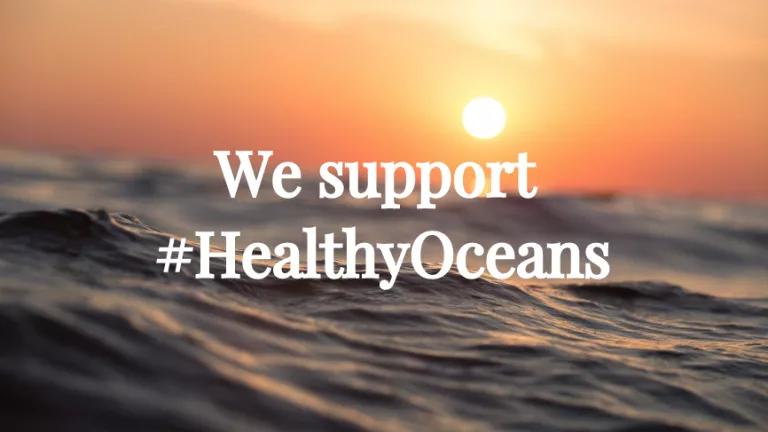
A Senate Commerce, Science and Transportation committee recently held an oversight hearing on the National Ocean Policy, sometimes known by its wonkier name of Executive Order 13547. The policy promotes coordination among the dozens of state and federal government agencies that make decisions about offshore businesses and marine life. It embraces the concept of ecosystem-based management—managing resources in a more holistic way to better account for all interactions within an ecosystem, as opposed to taking a strictly species-by-species approach.
From where I sit, this sort of upfront collaboration and broader view make a ton of sense. Ocean use and uses are growing rapidly and on any given day, I could be asked about:
- offshore wind farms moving ahead along the Atlantic coast
- new aquaculture proposals,
- ships longer than the Empire State building that are now traveling through the expanded Panama Canal;
- how to balance onshore beach restoration in the face of more frequent, stronger storms with fisheries needs for sand resources;
- how to protect highly endangered wildlife like the North Atlantic right whales that run the gauntlet through new and expanded uses to migrate between feeding and calving areas.
In an age of intense partisanship and agency divisions, the policy’s common-sense coordination is needed more than ever. It is the glue that compels agencies to work together at the front end to identify and resolve conflicts early on. It provides a new venue for decision-makers to share their experiences with each other and stakeholders and allows for a broader look at ocean trends.
This is not a new concept—the policy is based on decades of research and public outreach, as well as the recommendations of two separate, bipartisan ocean commissions that called for improved coordination of our shared ocean resources.
And the National Ocean Policy is improving ocean management. For example, states in the Mid-Atlantic and Northeast regions, together with their federal agency partners, Native American tribes and fisheries managers, developed ocean plans based on science, with stakeholder input, to guide collaboration on key issues like offshore wind, sand mining, and aquaculture. These plans celebrated their first anniversary last week and we are seeing their benefits, not the least of which is the creation of the Northeast and Mid-Atlantic ocean data portals. Developed to help in the plans’ development, the portals have centralized state, federal, and stakeholder ocean use and marine life data online and are being used by stakeholders and agencies alike.
Which is why comments made at today’s hearing that the National Ocean Policy is bringing “uncertainty” into decision-making are so confusing. Only where rhetoric rules over reality can you see increased access to the best available data and greater upfront stakeholder engagement and agency discussions resulting in a poorer outcome. Industries are using the data to help with siting because the fewer surprises you have in terms of where marine uses are occurring, the better. For example, a recent Mid-Atlantic Regional Planning Body meeting detailed how a telecommunications company used the data portal to site a cable from Virginia to Spain. Are the data portals perfect? No, but improvements are made as more data is collected and added. And even as is, the portals provide a new and important starting point for discussions, allowing everyone the luxury of looking at the same data.
Concerns that the National Ocean Policy and regional ocean planning impose a new regulatory impact on ocean and coastal activities are false. Regional ocean planning gathers information on marine life and use in order to inform decision-making under existing authorities. The plans do not create new regulations, laws, authorities, or missions; they call for actions that will help guide decision-making under existing authorities. The plans do require agencies to consult the portals in their individual decision-making authority, but, honestly, why would anyone want to ignore such a useful source of peer-reviewed and stakeholder vetted data when making critical decisions about a public resource like our ocean?
The regional planning bodies are the very opposite of the top-down structure some panelists feared. To develop the Mid-Atlantic’s regional ocean plan, the states of Delaware, Maryland, New Jersey, New York, Pennsylvania, and Virginia worked together for over three years with Native American tribes, federal agencies, and regional fisheries managers; a parallel process took place for development of the Northeast’s regional ocean plan. The public and stakeholders were asked to weigh in at every stage of these plans’ development and, as a result, the plans are grounded in what the states and communities want to see and need federal help with. The entire process was conducted with an aim toward helping us manage our public resources together. With new uses coming, we need to work better together; that’s what the plans do and what the policy supports.
It's time to face facts. Fearmongering that the National Ocean Policy will create a new regulatory body, lead to more bureaucracy, and that its reach would extend far into the Heartland is simply unfounded. At several years in, we’re seeing states and stakeholders more engaged and benefits from the policy that we can build on to help us shape our blue economy and ensure the waters off our shores remain healthy and serve as economic engines for the long haul.




